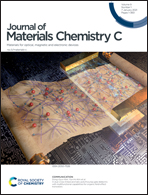Recent advances and prospects of D1:D2:A non-fullerene ternary polymer solar cells
Abstract
Ternary polymer solar cells (PSCs) exhibit broader absorption bands, greater potential in micro-morphology regulation, energy level tuning, and other advantages compared with binary PSCs, and is a facile and efficient approach for further enhancing photovoltaic performances. Because of its much more complicated morphology-forming process, the ternary devices with two donors and one non-fullerene acceptor are difficult to regulate. In contrast, the ternary devices with one donor and two acceptors show greater potential in improving the morphology stability of the active layer film, which is one of the biggest obstacles that hinder the commercialization of PSCs. This review systematically summarizes the principles and functions of the third component of high-performance non-fullerenes ternary PSCs, and outlines the recent advancements of ternary PSCs with two donors and one non-fullerene acceptor, including two polymer donors and small molecular acceptor, all-polymer PSCs, and PSCs with small molecule donors. The relationship between the composition and property was carefully examined and outlined. In addition, the valuable guidelines in developing high-efficiency and high-stability non-fullerene ternary PSCs are demonstrated.



 Please wait while we load your content...
Please wait while we load your content...